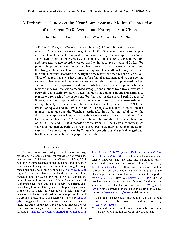摘要
The great 2008 Wenchuan earthquake (12 May 2008) with a moment magnitude of 7.9 and a surface-wave magnitude of 8.0 in Shichuan, China, caused unprecedented loss of human life and widespread severe damage to many types of structures. Thirty-two strong-motion records were obtained within a source distance of 300 km, and three near-source records were obtained within a source distance of 20 km. We present the preliminary results on the characteristics of the near-source records and the strong-motion aspects of this great earthquake. This earthquake may be divided into four subevents, according to the rupture time history and the final slip distribution. Three of the four subevents have large surface fault displacement, and we consider the subevents that generated the three near-source records as surface-rupture earthquakes, supported by the comparisons made to records from other surface-rupture or buried-fault earthquakes. One station recorded strong ground motions from two subevents in two well-separated time windows, and this allows us to examine the effect of earthquake parameters for each of the subevents. We find that, in the spectral period range of 0.5-2 s, the response spectra of the near-source records from the Wenchuan earthquake are significantly less than those of buried-fault earthquakes, such as the 1989 Loma Prieta earthquake and the 1994 Northridge earthquake that have a much smaller moment magnitude than the Wenchuan earthquake. In the fault-normal direction the displacement spectra at long period for the closest station are similar to those of the Lucerne record from the 1992 Landers earthquake but significantly smaller than those of the TCU052 and TCU068 records from the 1999 Chi-Chi, Taiwan, earthquake. At short and intermediate period, the near-source spectra are much larger than the design spectra in the previous version of the Chinese design code for the heavily damaged area, but they are comparable at long spectral periods.
- 出版日期2010-11-1
- 单位中国地震局
